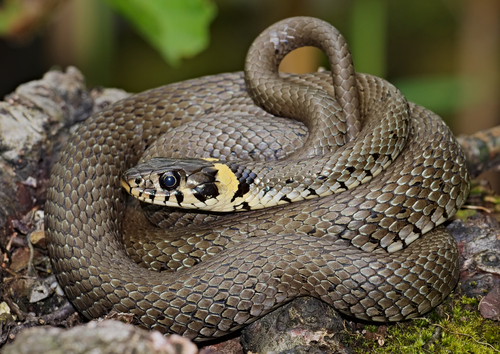
Grass Snake
The grass snake (Natrix natrix) glides silently through European wetlands, easily recognized by its yellow collar and olive-green scales. Often spotted near water, it plays a crucial role in controlling amphibian populations, illustrating the dynamic balance of its ecosystem.
10-15 years
Lifespan
Length: 61 - 122 cm
Size
White
Color
Least Concern
Conservation Status
Stable
Population Trend
Distribution Range of the Grass Snake
The species Natrix natrix, commonly known as the grass snake, is native to a wide area across Europe, parts of North Africa, and western Asia. Its geographical distribution includes countries such as the United Kingdom, France, Germany, Spain, Italy, the Balkans, Turkey, and reaching as far east as Iran and western parts of Russia. It is also found on many Mediterranean islands.
Grass Snake's Habitat
Environmental Conditions
Grass snakes prefer a variety of moist environments. They are typically found near water bodies such as ponds, lakes, marshes, rivers, and streams. These areas usually have abundant vegetation, which provides both shelter and a rich feeding ground. The climate conditions are generally temperate, with the species avoiding extreme cold or hot conditions.
Ecological Niche
Grass snakes are non-venomous and primarily feed on amphibians, particularly frogs and toads, making them an important part of the aquatic and semi-aquatic ecosystems they inhabit. They are excellent swimmers, with adaptations that allow them to exploit a range of aquatic and terrestrial environments. Seasonal hibernation is common, with the snakes often seeking out burrows or compost heaps where temperatures remain consistent through the colder months.
Copyright @ Nature Style Limited. All Rights Reserved.
 English
English